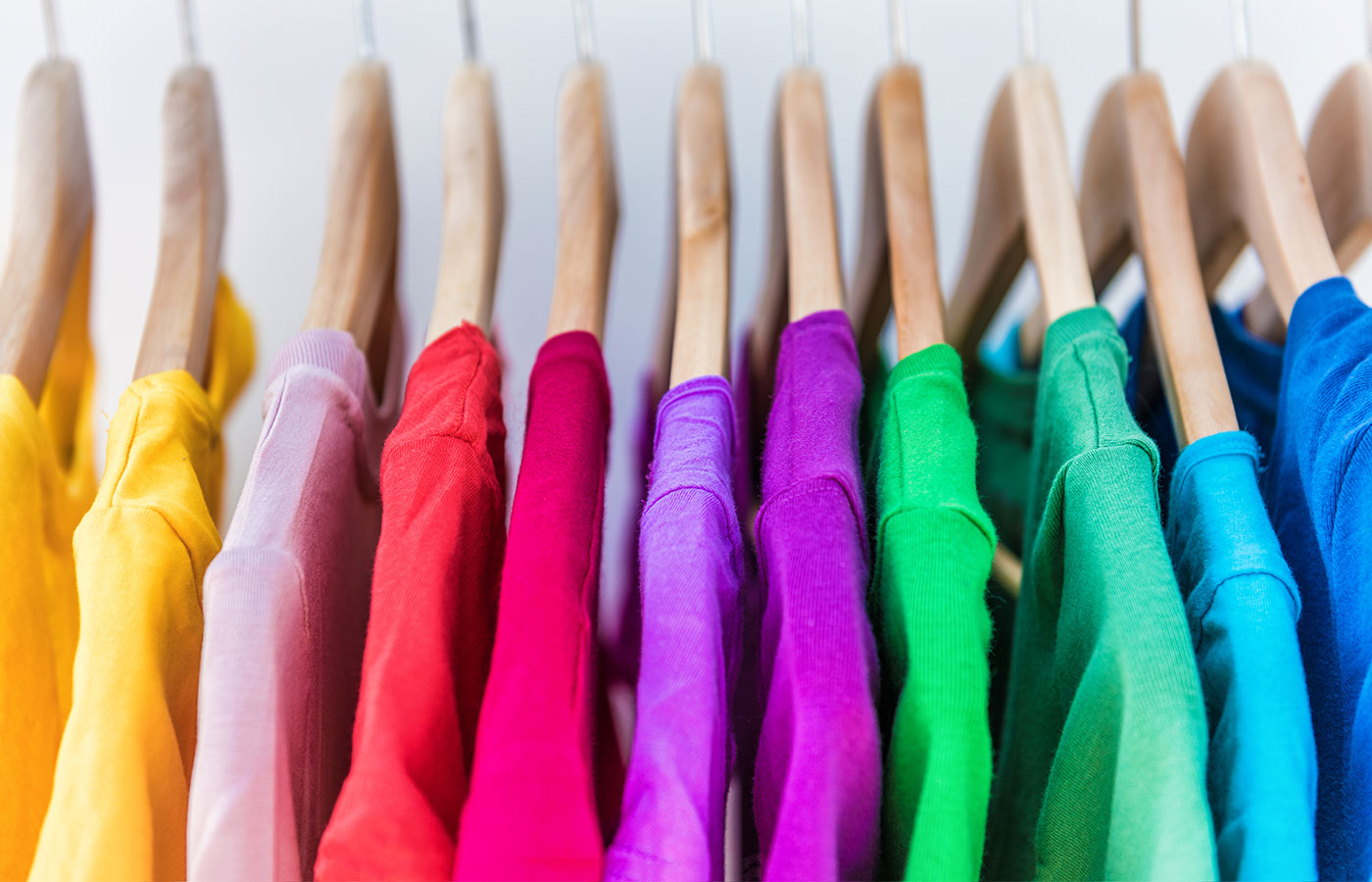How Branded Clothing Enhances Your Style Through Thoughtful Fabric Use
How Branded Clothing Enhances Your Style Through Thoughtful Fabric Use
Blog Article
Recognizing Clothing: The Value of Textile Selections in Your Closet
The selection of material in garments plays an essential role in both visual appeals and performance. Different materials supply differing degrees of breathability, comfort, and sturdiness, straight influencing the wearer's experience. Recognizing these subtleties can enhance one's wardrobe considerably. Lots of overlook just how these options can impact not simply personal design, but also sustainability. What textile decisions could redefine your wardrobe and align it with both design and obligation?
The Function of Fabric in Style and Functionality

Usual Material Types and Their Features
When picking garments, understanding the qualities of usual textile kinds is important for making informed choices. Cotton, a widely-used natural fiber, is recognized for its breathability, versatility, and soft qualities, making it suitable for sportswear and everyday garments. Linen, an additional all-natural choice, boasts exceptional moisture-wicking residential properties and a distinctive structure, suitable for cozy climates.Wool, usually preferred for its heat and resilience, differs in fineness; merino wool is soft against the skin, while coarser types are utilized for outerwear. Artificial textiles like polyester and nylon offer durability and resistance to wrinkles, making them prominent for activewear and traveling garments. Blends, which incorporate artificial and all-natural fibers, can improve capability while preserving comfort. By identifying these material features, individuals can choose apparel that lines up with their way of living and visual choices.
Breathability and Comfort: Choosing the Right Fabrics for Different Environments
Choosing the right materials for different climates can substantially enhance convenience and overall wearability. Breathable products are essential in warm environments, as they enable air blood circulation and dampness evaporation. Fabrics such as cotton, bed linen, and moisture-wicking synthetics successfully attract sweat far from the body, maintaining the user cool and dry. Alternatively, in cooler environments, thicker materials like woollen or fleece supply insulation while retaining breathability, ensuring heat without overheating.Additionally, the selection of fabric weight plays a crucial role; lightweight fabrics are preferable for summertime, whereas much heavier choices are suited for winter wear. Comprehending the unique residential or commercial properties of each textile allows individuals to dress appropriately for differing climate condition. Inevitably, selecting breathable and comfy textiles tailored to details environments can considerably enhance day-to-day comfort and enhance the overall experience of using clothing.
Sturdiness and Treatment: How Material Affects Durability of Your Closet
Choosing the ideal materials can significantly influence the resilience and care needs of a closet. Fabrics such as cotton and polyester are understood for their resilience and simplicity of maintenance, making them suitable for day-to-day wear. In comparison, delicate products like silk and shoelace require more careful handling and specialized cleaning approaches, which can enhance the time and effort required for care. Branded Clothing.Durability is additionally affected by the material's weave and finish; securely woven materials tend to stand up to deterioration better than loosely woven options. Furthermore, synthetic blends typically provide boosted toughness, integrating the very best qualities of discover this info here several fibers.Understanding the treatment instructions for each material is vital, as inappropriate washing or drying can result in premature wear. Inevitably, selecting long lasting materials can bring about a longer-lasting wardrobe, decreasing the frequency of replacements and adding to a more lasting style option
The Influence of Textile on Fit and Shape

Lasting Fabric Choices: Making Eco-Friendly Choices
The influence of textile extends past fit and silhouette to incorporate environmental elements, prompting a growing interest in lasting textile choices. Environment-friendly textiles, such as natural cotton, hemp, and Tencel, are obtaining traction among customers who focus on sustainability in their closets. These materials are frequently created with fewer chemicals and water, decreasing their environmental footprint.Additionally, recycled fabrics, made from post-consumer waste, provide a cutting-edge option to the textile market's air pollution trouble. Brands progressively welcome openness in their sourcing methods, allowing customers to make educated decisions regarding their purchases.Choosing sustainable textiles not just sustains ethical techniques but additionally urges the apparel industry to take on even more responsible manufacturing other methods. As awareness of ecological problems climbs, people are urged to review the long-term impact of their fabric options, promoting a motion towards a much more ecologically mindful and lasting technique to style.
Elevating Style: Just How Material Can Change an Outfit
While numerous might concentrate on color and cut when picking a clothing, the selection of material plays a necessary duty in elevating style and boosting total appearance. Various products communicate distinctive state of minds and messages; for instance, silk radiates deluxe and class, while denim provides a laid-back, relaxed vibe. The structure and drape of a fabric can considerably modify the shape, with organized fabrics giving a polished look and softer ones creating a much more fluid, kicked back aesthetic.Moreover, the weight of the material affects wearability across seasons. Light-weight fabrics like bed linen and cotton are perfect for summer, while heavier products such as wool and velvet offer warmth and sophistication in colder months. Understanding material homes, such as breathability and stretch, additionally equips individuals to make educated options that boost comfort without compromising design. Eventually, the best material can change a clothing from average to extraordinary, making it an essential consideration in any type of wardrobe.
Frequently Asked Inquiries
Just how Do I Recognize the Fabric Web Content of My Garments?
To recognize textile web content, one can analyze care labels, conduct shed examinations for fiber recognition, or speak with textile swatches. These techniques aid differentiate materials, ensuring educated options for clothing care and maintenance in daily wear.
Can Fabric Selection Affect My Mood or Confidence?
Textile selection can significantly affect an individual's state of mind and confidence. Branded Clothing. Particular materials might stimulate sensations of comfort or sophistication, while others can really feel uncomplimentary or limiting, eventually influencing self-perception and emotional wellness throughout the day
What Fabrics Are Finest for Sensitive Skin?
For individuals with delicate skin, all-natural fabrics like linen, bamboo, and cotton are usually recommended. These products are breathable, hypoallergenic, and less most likely to trigger irritability, making them appropriate choices for convenience and skin health and wellness.
Just how Do I Properly Clean and Care for Different Fabrics?
To appropriately care and wash for various fabrics, one must take into consideration each material's particular demands, including temperature setups, detergents, and drying out approaches, ensuring durability and preserving the fabric's original qualities for optimal use.
Are There Specific Fabrics for Athletic or Performance Put On?
Sports or performance wear typically utilizes materials such as nylon, spandex, and polyester. These products are made for moisture-wicking, breathability, and adaptability, improving activity and convenience throughout physical activities while offering longevity and support. Alternatively, in colder environments, thicker materials like wool or fleece give insulation while keeping breathability, making sure heat without overheating.Additionally, the selection of fabric weight plays an important function; lightweight textiles are more effective for summer, whereas heavier choices are matched for wintertime wear. In comparison, delicate materials like silk and lace call for more mindful handling and specialized cleaning approaches, which can raise the time and initiative required for care.Durability is also affected by the textile's weave and coating; tightly woven fabrics have a tendency to resist wear and tear far better than loosely woven alternatives. In contrast, stiff materials can restrict activity yet give a classic, sleek look.Moreover, the thickness and appearance of the fabric can affect the aesthetic understanding of body form. The influence of textile prolongs beyond fit and silhouette to include ecological variables, triggering an expanding passion in sustainable material selections. The appearance and drape of a material can significantly alter the silhouette, with structured fabrics giving a sleek appearance and softer ones creating an extra fluid, relaxed aesthetic.Moreover, the weight of the fabric affects wearability throughout seasons.
Report this page